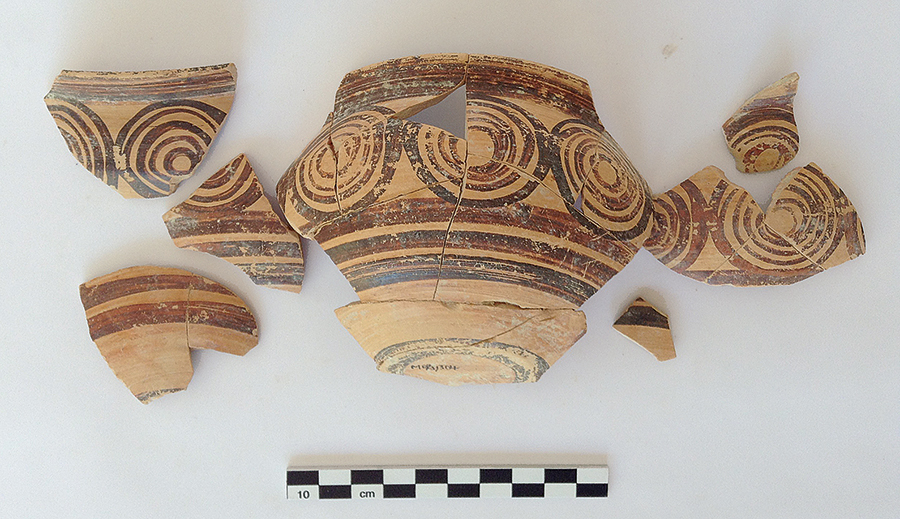January 2019 (123.1)
Article
Pottery Styles and Social Dynamics at Neopalatial Myrtos-Pyrgos
By Emilia Oddo
This study proposes a definition of a distinct region of Late Minoan (LM) IA Crete on the basis of ceramic style and discusses its cultural meaning. A summary comparison of the stylistic features of Neopalatial, mainly LM IA, fine tableware from Myrtos-Pyrgos and other sites of southeastern Crete shows a distinct style, and I argue that the southeast should be considered a ceramic region. Current understandings of LM IA culture have emphasized homogeneity, echoed also in a perceived similarity of ceramic styles. A contextual analysis of the fine tableware from Myrtos-Pyrgos associated with contemporary architecture shows that the consumption of two different ceramic styles coexisted in LM IA at this site, one local to southeastern Crete and the other characteristic of the northcentral part of the island. The analysis indicates that contexts of power and display are associated with the use of nonlocal ceramic and architectural styles. As a result, I argue that different types of material culture reflect different social mechanisms, that regionalism is, therefore, a multifaceted phenomenon that produced nonoverlapping regions in LM IA Crete, and that the southeast should be regarded as a distinct ceramic region.1
